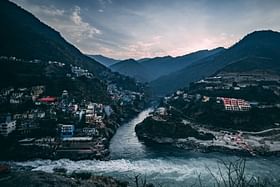In December 2022, the United Nations recognised the Namami Gange initiative as one of the top 10 World Restoration Flagships to revive the natural world.
In an aim to further enhance the significance and need to maintain River Ganga, the government of India has approved Namami Gange Mission-II, till 2026, with a financial allocation of Rs 22,500 crore.
This budget includes the project expenditure for existing liabilities amounting to Rs 11,225 crore, and additional Rs 11,275 crore financial allocations for new interventions through the mission.
Bishweswar Tudu, Minister of State for Jal Shakti, stated that a total of Rs 14,084 crore has been released by the centre to the National Mission for Clean Ganga (NMCG), from the Financial Year 2014-2015, till January, 2023.
“Out of this, Rs 13,607 crore is released by NMCG to state governments, state missions for clean Ganga and other agencies for implementation of projects related to Ganga rejuvenation,” he added.
Cleaning and balancing the natural character of the river is a continuous process. The government of India aims to support the efforts of the state governments in addressing the challenges of pollution in river Ganga and its tributaries, by providing financial and technical assistance.
Namami Gange Programme
‘Namami Gange Programme’ is an integrated conservation mission, approved as a ‘Flagship Programme’ by the union government in June 2014 with budget of Rs 20,000 crore, to accomplish the objectives of effective reduction of pollution, and conservation and restoration of national river Ganga.
Through the mission, a wide range of interventions have been brought forward with a focus on cleaning the existing waste in the river stretches, while also introducing methods to reduce further degradation and pollution of the natural water resource.
This includes systems for wastewater treatment and solid waste management, with the aim of preventing any kind of untreated waste water being discharged in to the river.
Further, owing to the importance of the river Ganga and its natural essence for the surrounding regions and populations, development of riverfronts, including ghats and crematoria are also proposed in various states.
To retain the natural balance and river ecology — afforestation, preservation of biodiversity and aquatic life, along with awareness, training and public participation have been undertaken as part of the programme.
A total of 409 projects have been taken up at an estimated cost of Rs 32,912 crore till 31 December 2022. Out of this, 232 projects are complete and made operational.
Majority of the projects pertain to creation of sewage infrastructure, as the untreated domestic and industrial wastewater is believed to be one of the major factors for pollution in the river.
A total of 177 sewerage infrastructure projects have been taken up at a cost of Rs 26,673 crore for creating a capacity of 5,269.87 million litres per day (MLD) for sewage treatment plants (STP) and laying of around 5,213 km sewerage network.
Among these, 99 projects have been completed along with laying of 4,260 km sewerage network.
Additionally, through the corresponding State Pollution Control Boards (SPCB), the Central Pollution Control Board (CPCB) is conducting research as part of the mission’s water quality evaluation of the river at 97 locations in five main stem states.
Ganga is among the largest rivers in Asia, flowing more than 2,500 km from Gaumukh in Uttarakhand to the Bay of Bengal at Gangasagar in West Bengal. With its river basins in 11 states, it is diversely connected to a large population and is home to 2,500 species of flora and fauna.
The river also carries spiritual and religious significance and is closely associated with the traditions and sentiments of the people of India.
In December 2022, the United Nations recognised the Namami Gange initiative as one of the top 10 World Restoration Flagships to revive the natural world.
According to the Ministry of Jal Shakti, the programme was selected from over 150 such initiatives from 70 countries across the globe.
They were selected under the banner of the United Nations Decade on Ecosystem Restoration, a global movement coordinated by the United Nations Environment Programme (UNEP) and the United Nations Food and Agriculture Organization (FAO).


